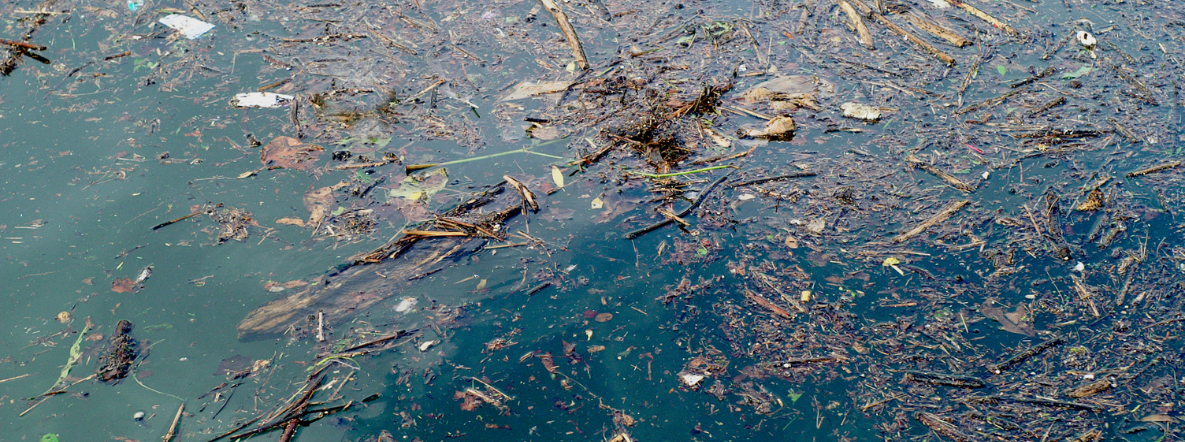Polluting a river is a sin against it!
28 Sep 2022
Opinion: Sanjib Pohit and Anupma Mehta:
Immersion of idols laced with harmful chemicals does an irreparable damage to a river, time to stop sinning against salvator.
It is that time of the year again, when the devout prepare fancy and exotic idols of gods and goddesses, venerate them for a few days and then consign them to the waters of our rivers. The immersion ritual, as witnessed during the recently concluded Ganesh festival and also anticipated during the forthcoming Durga Puja celebrations, has been a regular annual feature of the festival season across the nation. This is because our rivers are perceived as divine, almost supernatural, entities that have the power of salvation and exculpation of human sins. But while immersing idols signifies a sort of religious atonement for the ‘sinners’, unfortunately, the rivers that function as the sites for this redemption become the ones ‘sinned against’; for this paradoxical coalescence of divinity and desecration not only leads to surface pollution in the rivers but also damages their biodiversity and causes extensive and often irreversible contamination of the groundwater. Several of the idols immersed in the rivers are made from Plaster of Paris, which takes countless years to dissolve, and paint comprising heavy metals like mercury, cadmium, and lead.
River pollution is, in fact, a persistent area of concern across the country. Other research documents the high level of pollution and contamination in the Ganga river, which increases notably during the Hindu festive season. A study by the National Council of Applied Economic Research (NCAER) examines the state of Ganga river water quality at selected stretches of the river in recent years. For ensuring a detailed analysis of the polluting constituents in the Ganga, the NCAER team moved beyond conventional laboratory examination of water samples and used in-situ mobile sensor platforms equipped with GPS capability to pinpoint the pollution sources and hotspots in the river, and capture water quality data at high geospatial resolution. Noting a significant deterioration in the river water quality due to pollutants, the NCAER study points out that despite being among the top ten water-rich countries of the world, and home to both perennial and non-perennial rivers, India has become a water-stressed region.
Albeit, a large proportion of the pollution in rivers is the result of anthropogenic activities and the release of raw sewage, untreated industrial effluents, pesticides, and debris into the river. However, this does not diminish the polluting impact of visarjan or submergence into the river of idols made with non-biodegradable and toxic materials. So, wherein lies the solution? While seeking to purify ourselves through religious rituals, how can we ensure the purification of our rivers too?
For the last few years, the Central Pollution Control Board has been issuing advisories to prevent riverine pollution by prohibiting the immersion of idols, puja material, and religious offerings in rivers . Recently, the Delhi Pollution Control Committee (DPCC) too urged all urban local bodies in the city to set up temporary ponds in residential areas for the immersion of idols. The DPCC’s guidelines mandate the removal of worship materials like flowers and paper decorations, and of collection of biodegradable material used in the idols for recycling and composting, before the immersion.
However, while the advisory is clear on the ‘do’s’ and ‘don’ts’ about idol immersion, it is silent regarding the enforcers who would ensure diligent implementatio. What is the guarantee that the harmful chemicals released from the idols after immersion would not percolate underground through the multiple water bodies earmarked for the immersion? The larger, more serious implications of this could be contamination of the groundwater. Further, decentralisation of idol immersion away from the Yamuna necessitates the redoubling of efforts to monitor the ground pollution level.
It is thus imperative for the authorities to follow a somewhat centralised approach for monitoring the pollutant load arising due to immersion. Both the authorities in Delhi and the Namami Ganga Clean-up Campaign being undertaken to cleanse the Ganga river can also draw lessons from the Kolkata Municipal Corporation which has been following the ‘no pollution’ principle during the Durga Puja rituals in Kolkata, wherein vats are placed alongside rivers for collection of decorative items removed from idols before their immersion. Thereafter, any residual debris in the rivers is extracted with the help of cranes to minimise the pollutant load in the river. This approach is certainly worth emulating.
The NCAER study also revealed that a large section of the people living in the Ganga river basin depends on the river for their daily needs and livelihood. Similarly, the Yamuna river is the aquatic lifeline for Delhi and its surrounding areas. Hence, even as the Yamuna, Ganga, and all our holy rivers ostensibly absolve us of our moral sins, the least we can do in return is to keep them free of physical and human waste.
Sanjib Pohit is Professor and Anupma Mehta is Editor at the National Council of Applied Economic Research (NCAER). The views expressed are personal.
Published in: The Pioneer, 28 Sep 2022






